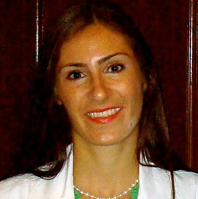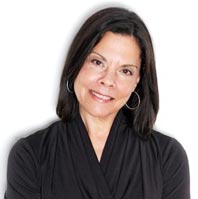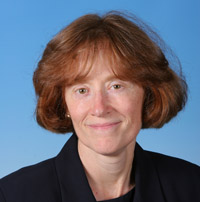Should you get tested for the breast cancer gene?
Science can tell us more about our futures than ever before . . . but do you want to know?
In 1998, FOF Gail’s doctor suggested that she get tested for the BRCA gene–a mutation that indicates an extremely increased risk of breast and ovarian cancer. She didn’t think twice. “Of course I got tested!” she says now. “My mother had died of breast cancer, and I’d had it once before, at age 42. I wanted to save my life, whatever it took.”
In the end, Gail’s test was negative–she didn’t have the BRCA gene mutation, but she still opted for a bilateral mastectomy soon after taking the test. And she has no regrets today. “If you have a chance to know something, why wouldn’t you know it?” she says now.
We spoke to Dr. Kristi Tough, MD, who specializes in breast cancer treatment at The Cleveland Clinic, about this increasingly popular test. She explains who should get it, what it means, and why some high-risk women choose not to get it at all.
- What exactly is the BRCA gene?
- BRCA 1 and 2 are ‘tumor suppressor’ genes that work to repair damaged DNA. In some women, they don’t work correctly–they’re ‘mutated’–resulting in an increased risk of ovarian and breast cancer. A woman with a BRCA 1 or 2 mutation has up to an 80 percent chance of developing breast cancer in her lifetime. (For the average population, risk of breast cancer is about 12% in the United States). Her risk of getting ovarian cancer is upwards of 40%.
- That’s frightening.
- Yes, but it’s important to know that less than 10% of breast cancers and less than 15% of ovarian cancers are associated with genetics. So if you have this gene, you have a very increased risk, but if you don’t have the gene, you’re still at risk. Other factors such as age and sex can’t be changed, however modifiable factors such as obesity (especially in post-menopuasal women) and excess alcohol intake also increase your risk.
- Can anyone have this mutation?
- It’s inherited, and it has a very specific inheritance pattern. It typically manifests in a strong family history of breast and ovarian cancer (or pancreatic or prostate cancer) and is more common in certain ethnicities, including Eastern Europeans and Ashkenazi Jews.
- So how do you test women for this faulty gene?
- There is a blood test that screens for the BRCA 1 & 2 mutations. It’s been around since 1996.
- Who should get tested for the BRCA mutation?
- It’s kind of a moving target, because exactly who should get tested differs among some medical organizations. But we encourage patients to consider testing if you have any of the following risk factors as outlined by the United States Preventative Services Task Force:
- • Two first-degree relatives (ie: mother, sister or daughter) with breast cancer, one of whom was diagnosed at age 50 or younger
- • A personal history of breast cancer that was diagnosed when you were younger than age 45
- • A family member who has already tested positive for the BRCA mutation.
- • A combination of 3 or more first or second degree relatives (aunts, grandmothers, etc) who have been diagnosed with breast or ovarian cancer, regardless of their ages.
- • One first-degree relative who has been diagnosed bilateral breast cancer. (BRCA 1 & 2 patients are more likely to get bilateral breast cancer.)
- • A first or second degree relative with a combination of breast and ovarian cancer, or two or more with ovarian cancer.
- • A history of breast cancer in a male relative.
- • You are of Ashkenazi descent and you have one first degree relative diagnosed with breast or ovarian cancer or two second-degree relatives on the same side of the family diagnosed with breast or ovarian cancer.
- Is the test expensive–does insurance cover it?
- It’s $3,000. But if you qualify, insurance covers about 90% of it. You have to work with your physician or genetic counselor to prove that your risk factors warrant a test, and that you’ve been counseled as to the risks and benefits of knowing your BRCA status.
- What do you mean by “risks” of knowing your status?
- If you get a positive result, that’s a lot to digest. Genetic counselors have to explain all the possible outcomes and recommended treatments. They have to ask questions like, ‘If you got a positive results, how would that effect you? Would it cause you anxiety? What would you choose to do with the results?’
- What are the possible results and options?
- If you test positive for the BRCA mutation, your risk of breast cancer is 80 percent over your lifetime–and 40 percent for ovarian cancer. That’s when you start a conversation about prevention.
- First, there’s medication. There are drugs that decrease the risk of breast cancer in high risk patients and have been studied for many, many years. Tamoxifen, for example, is prescribed for pre-menopausal and post-menopausal women. For post-menopausal women, we prescribe Reloxafine. And there are some new medications on the horizon.
- There’s also surgery. A preventative mastectomy–in which all breast tissue is removed–can reduce your risk of breast cancer by about 80 to 90 percent. In this day and age we have excellent reconstructive options–implants, or breast reconstruction using your own tissue. But for a lot of women, breasts are part of your identity, so not everyone is going to proceed with that. Preventative removal of both ovaries and fallopian tubes reduces the risk of ovarian cancer by 80-90 percent. And the breast cancer risk goes down to 50-60 percent because of the reduction in estrogen.
- If you don’t want surgery, there’s always increased screening. We start mammography screening earlier and increase the frequency of clinical breast exams. You can also qualify for MRI screening, which can detect very early cancerous tumors. However, while MRI does lead to early detection and treatment, we have not seen a correlation between the use of MRI and a decrease in mortality.
- No matter what you do–even with surgery–your risk does not go down to zero, and that’s something that a lot of patients struggle with.
- What if you get a negative result–you don’t have the BRCA mutation?
- A negative result is great because it’s a true negative. It means your risk is about the same as the general population. However if you have a strong family history of breast or ovarian cancer and test negative, this inheritance pattern could be caused by a mutation in a gene other than BRCA 1 or 2 that increases your risk but is not detected by BRCA analysis. The most difficult result to deal with is “variant of undetermined significance”, which basically means that the test was inconclusive. Those women are counseled to consider increased surveillance with screening and medications to reduce their risk.
- Are women counseled any differently if they are over fifty when they get the test?
- No matter what age you are, it’s a risk/benefit discussion. If you’re 30 when you test positive, you have different considerations. We recommend removing ovaries only after you’re finished your childbearing years, for example. If you’re fifty and you have other issues that might be improved by a hysterectomy, such as fibroids or urinary incontinence, than that’s also taken into consideration.
- Are there women who qualify but choose not to take the BRCA test?
- Yes, absolutely. I often have patients who say, ‘I don’t want to know. It would cause me too much anxiety. I wouldn’t have surgery, so it makes no difference to me anyway….” Many times, I’ve sent women to the genetic counselor and they’ve come back and told me they don’t want the test. It’s a very personal decision.
- Wow, that surprises me. If you were in the high risk group, do you think you’d get the test?
- Yes. And I encourage my patients to do the same so they can make informed health decisions for themselves and their children.
| Author | |
 |
Kristi Tough, MD, is a board certified internist specializing in women’s health at the Center for Specialized Women’s Health at the Cleveland Clinic. Her clinical and research interests include breast cancer screening, prevention, and treatment of high risk breast cancer patients. She is involved in the early stages of the preventative breast cancer vaccine. |




 Dr. B: Yes, if it’s a localized cancer found in its earliest stages, before it has broken through the wall of the GI tract. If colon cancer is caught and treated in its first stage, the five-year survival rate is 90 percent, which is very good. This means the majority of people will live at least five years after diagnosis.
Dr. B: Yes, if it’s a localized cancer found in its earliest stages, before it has broken through the wall of the GI tract. If colon cancer is caught and treated in its first stage, the five-year survival rate is 90 percent, which is very good. This means the majority of people will live at least five years after diagnosis. Dr. B: You don’t need to follow up the next day, but the sooner you do, the better. You don’t want to risk of the cancer moving to stages 2 or 3.
Dr. B: You don’t need to follow up the next day, but the sooner you do, the better. You don’t want to risk of the cancer moving to stages 2 or 3.